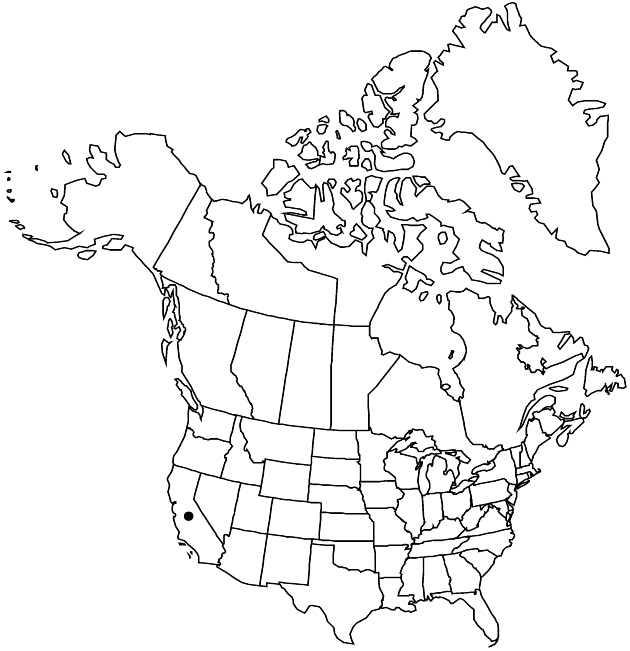Layia discoidea
Aliso 4: 106. 1958.
Plants 3–20 cm (self-incompatible); glandular, not strongly scented. Stems not purple-streaked. Leaf blades oblanceolate or lanceolate to linear, 2–35 mm, margins (basal leaves) lobed. Involucres cylindric or narrowly obconic to campanulate, 4–7 × 2–6+ mm. Phyllaries 0 (“involucres” formed of “paleae”). Paleae in 1 series (interpreted as constituting the involucre). Ray florets 0. Disc florets 5–35+; corollas 2.5–4 mm; anthers yellow to brownish. Ray cypselae 0. Disc pappi of 8–15 whitish to tawny, lanceolate to subulate, ± equal (often apically or marginally notched) scales 0.5–1.5 mm, each ± plumose or villous, not adaxially woolly. 2n = 16.
Phenology: Flowering Apr–Jun.
Habitat: Open, ± barren slopes and terraces, in chaparral, woodlands, forest, and meadows, on serpentine soils, talus
Elevation: 800–1600 m
Discussion
Of conservation concern.
Layia discoidea occurs in the South Inner Coast Ranges (Fresno and San Benito counties). Artificial hybrids with L. glandulosa are highly fertile (J. Clausen 1951).
Selected References
None.
